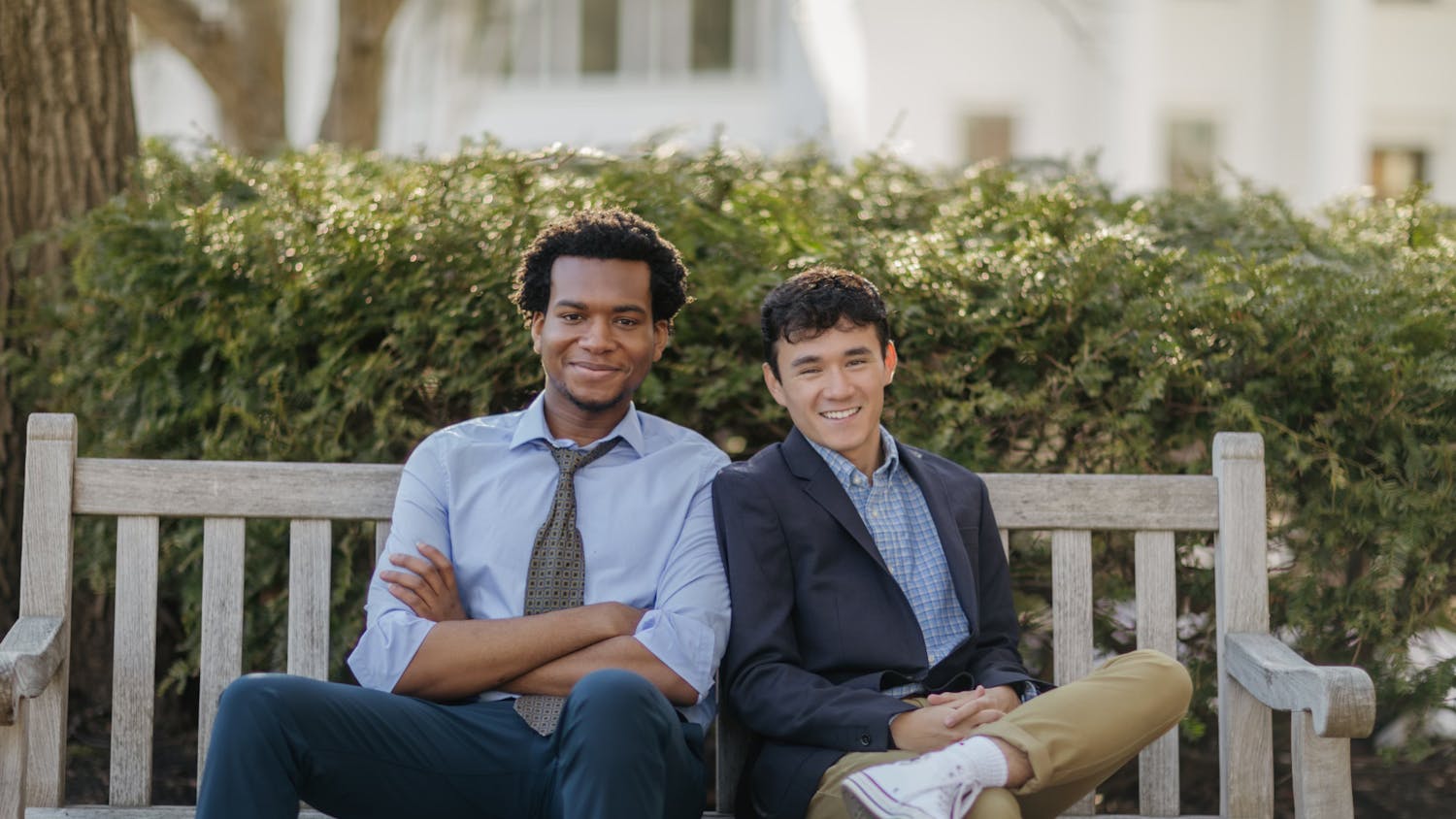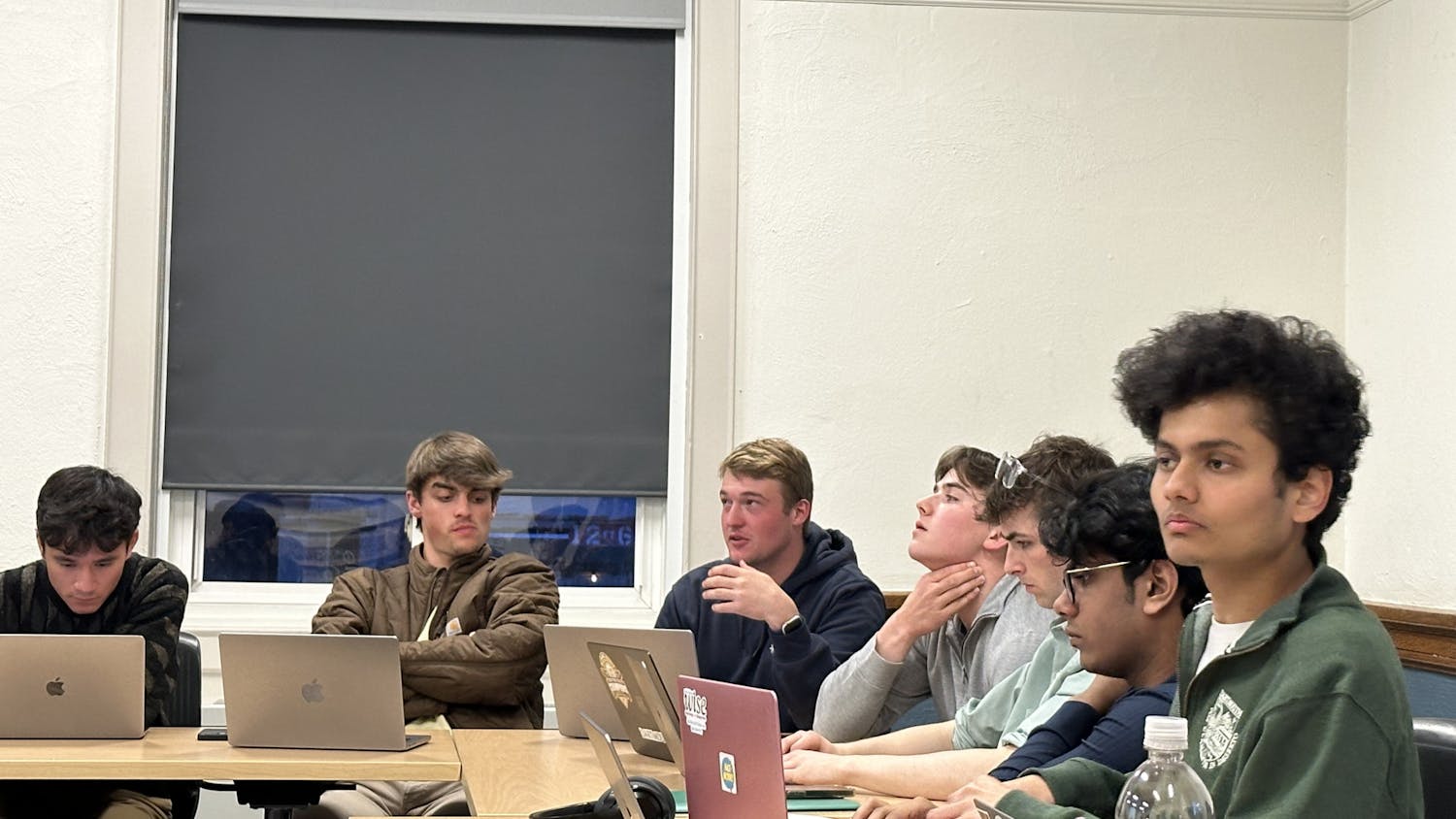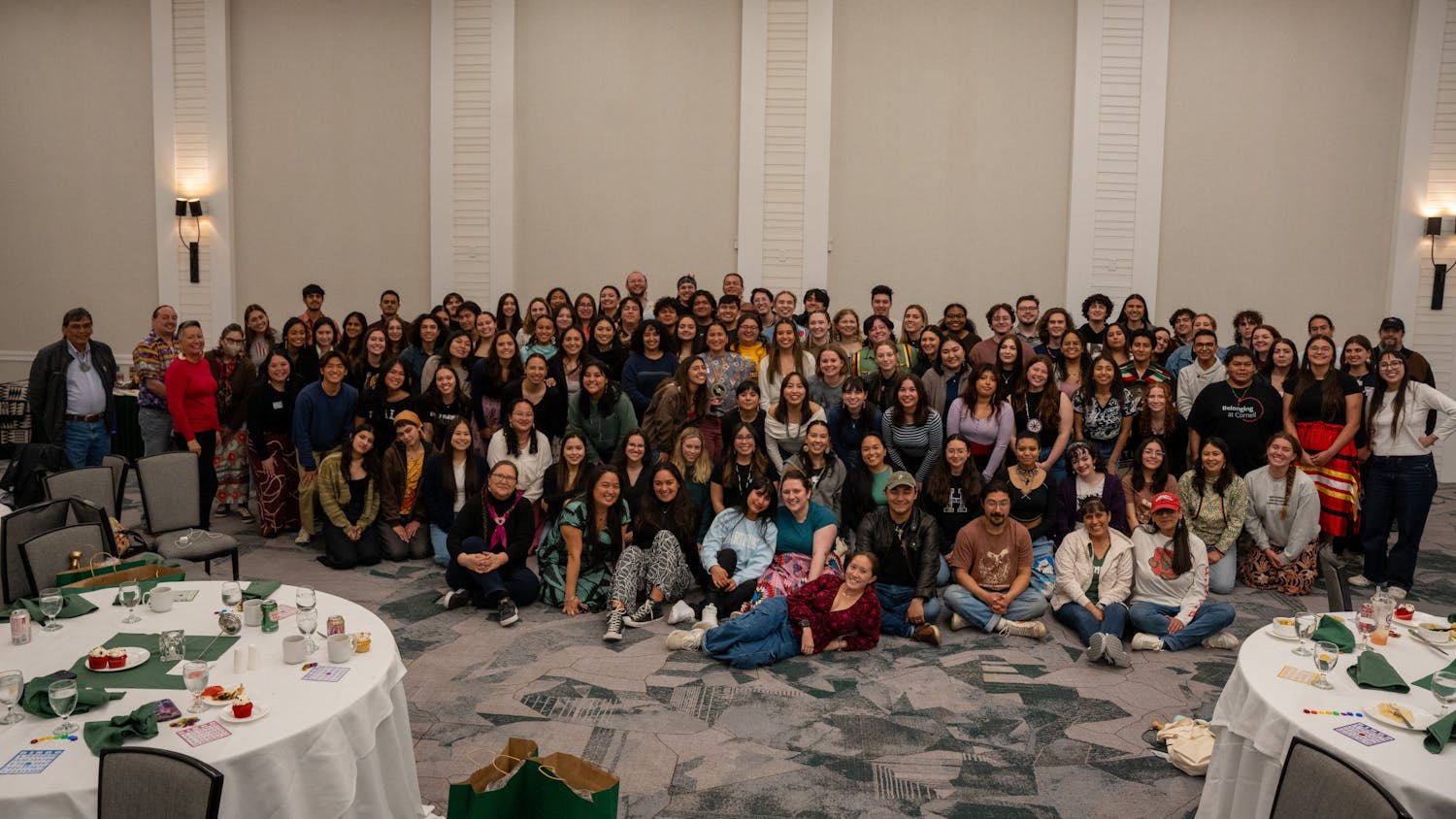This fall, professors at Dartmouth have access to a newly redesigned classroom focused on promoting student engagement, offering flexible seating arrangements and multiple projectors.
The classroom, located in Carson 61, is designed around the concept of “active learning,” director of the Dartmouth Center for the Advancement of Learning Lisa Baldez said. Active learning refers to classroom formats that try to directly engage students with the material during class time, as opposed to having them passively listen to a lecture. Examples include both active discussions and time for students to work on problems in class.
Renovated for the fall term, the classroom is focused on flexibility. Modeled after three existing rooms in the Life Sciences Center, it contains lightweight furniture equipped with wheels, allowing tables and chairs to be easily moved and reorganized. All four walls are lined with whiteboards for group discussions. In addition, there are seven projectors in the room, six of which allow students to connect their own laptops to wirelessly project their screens. Content can be shared from one screen to another, allowing for greater collaboration.
Traditional classrooms with fixed or bulky seating limit the potential for active learning, forcing professors to work around the space, Baldez said. For example, in a traditional lecture hall with stadium-style seating, she said it is inconvenient for students to face each other during discussions. In contrast, the flexible furniture in Carson 61 allows professors to set up the classroom however they wish, giving them increased versatility in designing their classes.
Discussions about renovating classrooms to better support active learning began three or four years ago, associate chief information officer for academic and client services Alan Cattier said. Plans to renovate Carson 61 began this past February, while construction began during the summer and finished in late September, he said.
Five classes are currently being taught in Carson 61. While professors have varied in how much they use the technology features in the room, all of them have taken advantage of it to at least some degree, Cattier said.
Chair of the quantitative social science program and government professor Michael Herron, who teaches the quantitative social science course “Sports Analytics” with College President Phil Hanlon, said that he liked the room and its capabilities. In particular, he appreciated the flexibility of the furniture, which makes it easier for him to break the class into groups and walk around the room. He and Hanlon take advantage of this each Friday, when they answer general questions using the main projector and then split the class into groups to work on programming exercises and problem sets. They also used the new projector system during a guest presentation, beaming a complex graph onto each of the six projectors so that students could read it more easily.
Herron and Hanlon did not specifically design their course around the classroom, but Herron felt that it has complemented the course’s structure, particularly the Friday lab sessions.
“I’m confident in saying they’ve gone better than they would have in a regular room,” he said.
While he appreciates the flexibility the room provides for the “Sports Analytics” class, Herron is not sure that all of his classes would benefit from it the same way. He cited his game theory course as an example of a class where students mainly work individually on problem sets and where group discussions might be of limited help.
History professor Udi Greenberg, who teaches the course “World War II: Ideology, Experience, Legacy,” said his main draw to the room was how easy it was to rearrange the furniture to switch between discussions and lectures. In previous years, he has been forced to book multiple classrooms to allow for both, but the new classroom lets him arrange seats in both rows and groups, he said.
“The history department has always been big on combining lecture with discussion,” he added. “We do not have classes that are lecture only.”
Despite the room’s new technology capabilities, Greenberg did not change his lesson plans to accommodate the room. This was in part because he had limited time to see the room before classes began, and also in part because he cannot guarantee he will be in the room again during future terms. If there were more spaces like it on campus, Greenberg would be interested in integrating the projectors into his lessons, he said.
There are currently no explicit plans to renovate other rooms. Right now, Carson 61 is in an “incubatory period,” Cattier said. Over the next year, the College will look at how professors respond to the room and if there are other innovations they can implement.
“We’re looking to get people a vision of what classrooms can be,” he said.
Despite this, Baldez predicts that faculty members will begin to demand more classrooms like Carson 61 as they learn more about it. When her colleagues in the government department first saw the room, they were “giddy” and immediately began planning how they could structure lessons around it, she said.
“For faculty who are looking to have teams and groups break out and work on activities, we think its a darn good room,” Cattier said.



